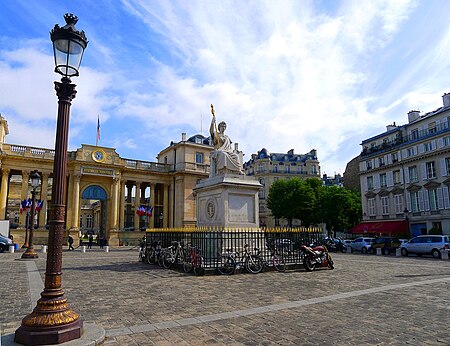Place du Palais-Bourbon
7th arrondissement of ParisBuildings and structures completed in 1804France stubsSquares in Paris

The Place du Palais-Bourbon is a historic square outside the Palais Bourbon in the 7th arrondissement of Paris, France. The land was acquired by Louis Joseph, Prince of Condé in 1769. The Prince de Condé hired architect Jean-François Leroy to design the square. Its construction began in 1788, and it was completed in 1804. In the meantime, the Prince of Condé had fled due to the French Revolution. In 1855, a statue named La Loi designed by Jean-Jacques Feuchère was installed at the centre of the square.
Excerpt from the Wikipedia article Place du Palais-Bourbon (License: CC BY-SA 3.0, Authors, Images).Place du Palais-Bourbon
Place du Palais Bourbon, Paris Faubourg Saint-Germain (Paris)
Geographical coordinates (GPS) Address Nearby Places Show on map
Geographical coordinates (GPS)
| Latitude | Longitude |
|---|---|
| N 48.8606 ° | E 2.3183 ° |
Address
La Loi
Place du Palais Bourbon
75007 Paris, Faubourg Saint-Germain (Paris)
Ile-de-France, France
Open on Google Maps










